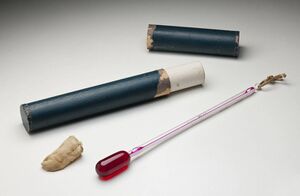Thermal comfort of the organism

An organism as an open system is in constant interaction with its surroundings. There is an exchange of matter, energy and information. Under normal conditions, the organism obtains a substantial part of its energy from food in the form of chemical energy. A small part of the energy obtained from the surrounding environment consists of light, mechanical and thermal, energy, energy of electromagnetic radiation mainly from infrared, but also visible or ultraviolet spectra, which may not be negligible in certain conditions when calculating the resulting heat balance of the organism. The total amount of energy that the organism exchanges with the environment in this way is related to the surface of the organism.
Thanks to thermoregulatory mechanisms a person is able to maintain the temperature of the core, i.e. the deep-seated organs, constant and to some extent independent of changes in the surrounding environment. The thermostatic center for body temperature regulation is located in the Hypothalamus and is set to 37 °C in humans.
If it is necessary to lower the temperature of the organism, i.e. to increase the removal of heat to the surroundings, the following mechanisms are mainly involved:
- vasodilation,
- noticeable sweating,
- limitation of heat production.
On the contrary, it is used to increase the body's temperature, i.e. to reduce heat dissipation into the environment
- vasoconstriction,
- increase in heat production,
- chills (muscle work uncontrollable by consciousness),
- increase in metabolism (due to the action of caloric hormones).
The aforementioned regulatory mechanisms are far from sufficient if a person does not consciously contribute to thermoregulation with their behavior based on subjective feelings of cold or heat . It is often stated that the above thermoregulatory mechanisms will maintain the correct body temperature as long as the ambient temperature does not exceed the range of 20–55 °C under normal conditions.
By thermoregulatory conscious behavior we mean the appropriate way of dressing, choosing a suitable environment, developing a suitable activity, adopting an optimal body position and the like.
From the point of view of thermoregulation, fever. is a very interesting phenomenon . It is a condition where pyrogenic substances released in some diseases increase the set temperature in the thermoregulatory center in the hypothalamus. At this point, the balance is disturbed and the organism is apparently Hypothermic, and therefore all temperature-raising mechanisms are triggered. A typical external manifestation is chills. As soon as the pyrogenic substances cease to act, the center of temperature is adjusted to the correct temperature and the opposite situation occurs, i.e. overheating. All temperature-reducing mechanisms are applied, a typical external manifestation is intense sweating.
Thermal comfort of the organism[edit | edit source]
Heat in the body is produced as a by-product of chemical reactions. Physiologically, the temperature of the organism is maintained as a constant value by various regulatory mechanisms (termoregulation).
The thermal comfort of the body is affected by the following external physical factors:
- ambient air temperature,
- air flow,
- air humidity,
- radiation of surrounding objects,
- atmospheric pressure (very slightly).
The thermal well-being of the body can be measured with the Hill thermometer , which measures the resulting cooling effect of the environment, the speed of the air flow and - when two thermometers with different surfaces are used - the temperature of the surrounding surfaces.
Cat value K is a quantity that expresses the cooling effect of the surrounding environment, defined as:
- K=Q/τ (W · m −2 )
- Q – standard value of the device (J m −2 )), which is given by the ratio of the constant value of heat transferred to the environment from the surface of the thermometer by radiation and convection at a temperature drop of ot = 3 K and the area content of the surface of the bulb of the thermometer
- τ – time of temperature drop from 38 °C to 35 °C
The cat value depends on the temperature of the surrounding air, the speed of the air flow and the temperature of the surrounding surfaces.
Cat values of optimal values for environmental well-being are as follows:
- K = 190 W m −2 for a person at rest,
- K = 250 W m −2 for a person doing light work,
- K = 340 W · m −2 for a person doing heavy work.
Links[edit | edit source]
Related articles[edit | edit source]
Source[edit | edit source]
- KYMPLOVÁ, Jaroslava. Katalog metod v biofyzice [online]. [cit. 2012-09-20]. <https://portal.lf1.cuni.cz/clanek-793-katalog-metod-v-biofyzice>.
References[edit | edit source]
- ZITKO, Miroslav – NAVRÁTIL, Leoš. Návody k praktickým cvičením z lékařské biofyziky. aktualizované třetí edition. 2000. ISBN 80-902318-4-5.
Reference[edit | edit source]
- ↑ National Museum of Australia. Kata-thermometer made by Hicks, England, with muslin finger cover, in cardboard case [online]. [cit. 2015-11-16]. <http://collectionsearch.nma.gov.au/object/229282>.
